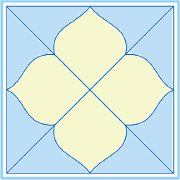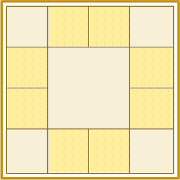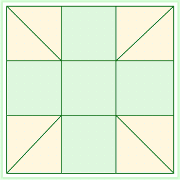| Astrology is the study of human behaviour and experience on the back drop of time
and space. Astrology is a scientific study and application of the language of the heavenly
bodies(planets and stars). These heavinely bodies are determined on the basis of astronomy
and mathematics, are mapped in the form of a horoscope. Their specific position in the
horoscope indicates specific happenings in the case of individuals. The main factors
affecting the horoscope of any individual are Date of birth, Place of birth and exact time
of birth. Whether the sun, the moon, the planets and stars themselves influence the
terrestrial phenomena, or they only indicate such phenomena by their various dispositions,
is immaterial. What is important to us is that variation in their disposition determine
variations in the events on the earth, the correlation are very strong. |
|
| Actually Astrology starts where Astronomy ends. As far as human experiences are
concerned both studies are complementing to each other. Astrological findings are based on
the Astronomical and mathematical and biological principles. |
|
| Astrology is widely used all over the world. People use it in different forms
according to region and culture of the area. |
|
| In Hindu Astrology, this system has been explained as space time connection.
Within the space, there are four elements Air, Fire, Water and Earth each is therefore
attributes, sattva , Raja and Tamasa and make up 12 divisions in the nature. |
|
| So the zodiac in which earth and all the planets are imprisoned by gravitation
and revolve around the sun is divided by 12 clusters of stars or signs of the zodiac. |
|
| In Vedic astrology it is founded that nothing in the universe is stationery. In
any case we consider ourselves in the central point with rest of universe in the constant
motion around us. We, therefore, consider the position and movement of all the heavinely
bodies in relation to earth itself. The Indian Astronomy and Astrology considers earth as
the centre, and all other heavenly bodies moving around it in one manner or the other. The
Indian astronomy is thus geocentric, and not heliocentric which latter considers sun as
the centre. |
|
| The zodiac forms the reference point for fixing up position of any planet or star
in the sky. Since it encircles the earth, it is comprised of 360 degrees. The twenty-seven
nakshatras being evenly distributed on it each having the span of 13°20’ arc. The
various nakshtras are numbered from one to twenty-seven. Apart from it Vedic astrology
recognises nine grahas. They are the Sun, the Moon, the Mars, Mercury, Jupiter, Venus,
Saturn, Rahu & Ketu. Of these the Sun is star, the moon is a satellite of the earth,
Rahu and Ketu are mere mathematical points on the zodiac. While the remaining ones are
planets. |
|
| When the zodiac is divided into twelve equal parts, each such part has an
extension of 30 degrees of the arc. Such a division is called Rashi or Sign . A sign
consist of two and a quarter nakshtras. |
|
| Each sign has a certain specific influence of its own. All the planets as they
travel around each zodiac sign, exert an influence according to their separate nature and
in accordance with the quality of aspect which they form. |
|
| More about principles of Astrology |
|
| As we know that there are twelve signs of the zodiac. One of sign rising happens
to be the sign rising at the eastern horizon at the time of birth. This rising sign is
called as lagna or Ascendant. The lagna happens to be the first house of horoscope. This
means that signs and houses donot coincide. The first house has the label of sign rising
at the time of birth, the second bears the label of sign that will rise next, and so on. |
|
| The nine grahas(from the sun to ketu) are the occupants of these houses. Each
house represents certain characteristics. The sign falling in these houses also represents
certain characteristics. |
|
| Horoscopic Chart |
|
| Before going further it is important to understand how a horoscopic chart looks
like. Vedic Astrology has three major facets. |
|
- Detailed mathematical
calculations.
- The rules and the information based on these rules
to predict the influence of planets.
- Heuristic predictions.
|
|
| Charting System in Vedic Astrology |
|
| The main points of it are as follows: |
|
| Rashichakra is regarded as 360 degree of the imaginary globe in which important
houses as well as nakshatras have their own place these positions keep changing from time
to time. In India various styles of astrological charts are prevalent. |
|

North Style
|

South Style
|
|

Oriya and Bengali
|
Various Chart Styles
|
|
| Nakshatra: |
|
| After arriving at Ishtakal, the position of the nakshtras and its value is known.
In Astrology 27 nakshatras are known. |
|
| NAKSHATRA YONI GAN NADI |
|
|
Asvini |
Ashva |
Dev |
Adya |
|
Bharani |
Gaja |
Manushya |
Madhya |
|
Krittika |
Mesh |
Rakshash |
Antya |
|
Rohini |
Sarp |
Manushya |
Antya |
|
Mrigsira |
Sarp |
Dev |
Madhya |
|
Ardra |
Shwan |
Manushya |
Adya |
|
Punarvasu |
Marjar |
Dev |
Adya |
|
Pushya |
Mesha |
Dev |
Madhya |
|
Rakshash |
Marjar |
Rakshash |
Antya |
|
Magha |
Mooshak |
Rakshash |
Antya |
|
P. Phalguni |
Mooshak |
Manushya |
Madhya |
|
U. Phalguni |
Gao |
Manushya |
Adya |
|
Hasta |
Mahishi |
Dev |
Adya |
|
Chitra |
Vyaghra |
Rakshash |
Madhya |
|
Swati |
Mahishi |
Dev |
Adya |
|
Vishakha |
Vyaghra |
Rakshash |
Antya |
|
Anuradha |
Mrig |
Dev |
Madhya |
|
Jyestha |
Mrig |
Rakshash |
Antya |
|
Moola |
Shwan |
Rakshash |
Adya |
|
Purvasdha |
Kapi |
Manushya |
Madhya |
|
Uttaradhdha |
Nukula |
Manushya |
Antya |
|
Shravana |
Kapi |
Dev |
Antya |
|
Dhanishtha |
Sinh |
Rakshash |
Madhya |
|
Shatbhisha |
Ashva |
Rakshash |
Adya |
|
P. Bhadrapad |
Ashva |
Manushya |
Adya |
|
U. bhadrapad |
Gao |
Manushya |
Adya |
|
Revati |
Gaja |
Dev |
Antya |
|
|
| Birth sign: |
|
| Whichever sign the moon is in, will be known as persons birth sign. |
|
| Ascendant(Lagna) : |
|
| To know the ascendant, it is necessary to make the horoscope. The Ascendant is
the particular sign and degree exactly on the eastern horizon in the latitude of birth
place for which the chart is cast. |
|
| Planets : In the life of man planets exert a deep influence. In a horoscope, if a
planet is in a particular sign, it is known as lord of that sign. |
|
| SIGNS LORDS |
|
| Aries |
Scorpio |
Mars |
| Taurus |
Libra |
Venus |
| Gemini |
Virgo |
Mercury |
| Cancer |
Moon |
|
| Leo |
Sun |
|
| Sagittarius |
Pisces |
Jupiter |
| Capricorn |
Aquarius |
Saturn |
|
|
|
|
|
|
|
|
The system of Houses |
|
| Houses : There are twelve celestial houses in Astrology and a
house is constituted with 30 degrees. They are derived from an equal division of the
circle of observation in to 12 parts. One-twelfth part of the circle of observation
constitutes an astrological house. In astronomy it is the vertical of the latitude
belonging to the place of the birth. The stars on the earth show the place of birth. |
|
| The rising house is called ascendant and the others are known as angular,
succedent and cadent houses. The angles are four cardipoints in the horoscope. The planets
in the horoscopic chart are subservient to lagna, and their original nature undergoes
modifications depending upon the lagna. |
|
- The kendras(or Quadrants) : Houses 1,4, 7 and 10.
These are highly significant houses.
- The panapharas(or Successant Houses) : Houses 2,5, 8
and 11.
- The Apoklimas(or Cadent Houses) : Houses 3,6,9 and
12
- The Trikons(or Trines) : Houses 1,5 and 9. These are
highly auspicious and, along with the kendras, determine the health, wealth, status,
dignity, rise and virtue or a native. The lagna being both a kendra and a trikona, is the
most significant of all the houses.
- The Upachayas : Houses 3,6, 10 and 11. These houses
indicate struggle, competition and material achievement.
- The Trika Houses : houses 6,8 and 12. These are
considered bad houses(Duhsthanas). They indicate debt, disease, loss and misery.
- The Ayu-sthanas(or houses of longevity) : Houses 8
and 3(8th from the 8th). They indicate the length of life and
therefore, also the death.
- The maraka-sthanas(or killer houses): houses 2 and 7
- The two halves of a horoscope.
- Houses 1 to 7 indicate the invisible half and houses
7 to 1 indicate the visible half of the horoscope.
- Houses 10 to 4 indicate the eastern half and houses
4 to 10 indicate the western half of the horoscope.
|
|
| Nine main planets are employed in Vedic astrology : Their Hindi Vedic names and
English equivalent are given below : |
|
| Vedic Name English Equivalent |
|
|
Ravi(Surya) |
Sun |
|
Chandra |
Moon |
|
Mangala |
Mars |
|
Budha |
Mercury |
|
Guru(Brihaspati) |
Jupiter |
|
Shukra |
Venus |
|
Shani |
Saturn |
|
Rahu |
Rahu(Dragon’s head) |
|
Ketu |
Ketu(Dragon’s Tail) |
|
|

|
|
![]()